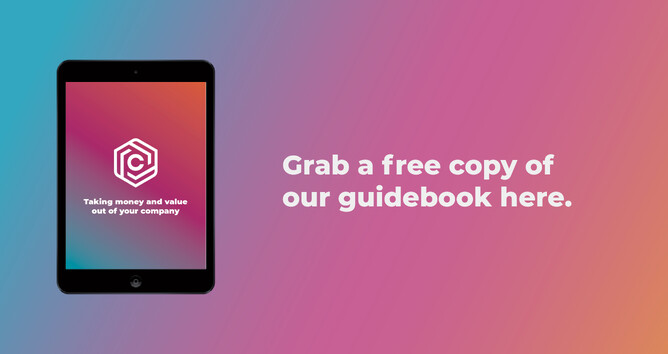Getting money out of your business can be a big concern when switching from a sole trader to a limited company. With so many different options available, it can be difficult to know the best ways to withdraw money from your own company, and how to pay yourself. Here we’ll run you through some of the most common and tax-efficient ways of getting money out of your company, from dividends to expenses.
The main thing to get your head around when you start trading through a limited company is that the profit and cash generated by the company belongs to the company, not to you. The business will have its own bank account with all that cash sat in it, but it’s not yours until the company pays it to you in some way, shape or form. Here are some of the most common ways to extract that money from your company:
Pay yourself a Salary
Now that you’re a Director (and likely a shareholder) of your own limited company, you can receive a salary for all your hard work. This differs from when you’re a sole trader, as you can’t be paid a salary by yourself.
Because you’re a Director you don’t necessarily have the same rights as an employee would have, meaning that you aren’t entitled to National Minimum Wage.
As a result, we’d usually plan a Director’s salary for you that maximises your tax and national insurance allowances for the current tax year. This year (2019/20 tax year) that amount is £8,632 per year, or £719.33 each month.
This amount might alter based on your own personal circumstances to account for other allowances available to you, or other income that you receive. We understand that every business is different, and we’ll never provide a blanket solution to all our clients. Instead, we’ll always tailor the amounts to best suit your own scenario.
“That’s great, but I need more than £720 a month to survive!” That’s where dividends come in!
Pay yourself Dividends
As a limited company owner, it’s likely that you’re now the sole shareholder in your company too. Perhaps that shareholding has been split with your husband or wife? That’s no problem. It’s this shareholding that will be the mechanism of paying the remaining income that you need.
It’s important to consider that there are restrictions on the level of dividends you can take, as the company can only pay dividends out of its profit-after-tax, known as “distributable profit”.
What does that mean?
Well, it means that, just because the company has £2,000 in the bank, you can’t have it all as a dividend. Presumably, the company will have to pay tax on the profit sat in the company, so you need to be sure that money is set aside.
That’s why it’s so important to maximise the reporting available for you in your accounting software. We’re guessing you’re using something like Xero, FreeAgent or QBO. Each of these will allow you to run a Profit & Loss report. The systems don’t automatically calculate the tax on profits for you, so you’ll need to estimate this. Or, even better, let an accountant prepare regular management accounts for you to give accurate tax estimates and profit figures. A prudent estimate would be to allow for 25% on the profit stated in your software, assuming your bookkeeping is fairly tidy (we can help with that too!).
Claim Business Expenses to lower your tax
Business expenses are a great way of keeping tax down. Before you can take a dividend from your company, you need to pay Corporation Tax on any profits made. Your allowable business expenses reduce the amount of profit which is liable for Corporation Tax, so, the higher your business expenses, the lower your company profits and tax will be!
When it comes to expenses, here are a few things to consider: are any of the expenses that you’re incurring personally items which could be recharged to your business? Do you have a mobile phone used for business? Are you claiming mileage? Working from home? Cycling to work? Getting an eye test? Depending on the circumstances, these are all allowable expenses.
There are various expenses that you may be paying for personally out of your ‘lifestyle’ income which are legitimate business expenses. Claiming these from your business will not only save the company Corporation Tax, but will also reduce the tax due on income you draw from the company. It’s a win-win!
What Next?
These are just a few of the ways you can get money out of your limited company. As your business grows and its requirements become more complex, finding the most efficient ways to extract value from your company and minimise taxes can pay dividends (quite literally)! A good accountant can help you make the switch from a sole trader or partnership to a limited company. They can also advise on the best methods of extracting cash from your existing company, helping you restructure your company to boost cash flow and profit.
Need more advice on extracting money from your business?
Want to find out more about what expenses you can claim, and how you can keep your company’s taxes down? Download our free guidebook for 25 ways to take money and value out of your company. Our in-depth guide will give you a fool-proof value extraction strategy, with useful tips and tricks to maximise value. We’ll outline the most efficient ways to lower your tax rates, as well as the tax-free benefits that can be provided by your company.
With these handy strategies in place, you can maximise the amount of money coming out of your company to boost your cash flow and profits.



